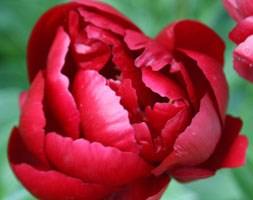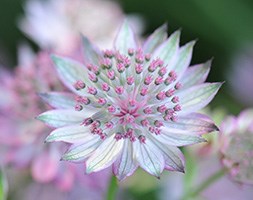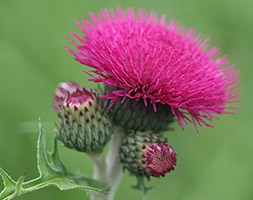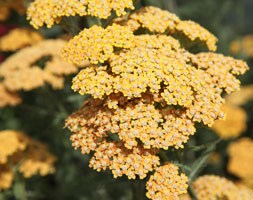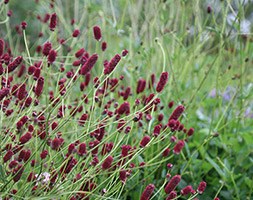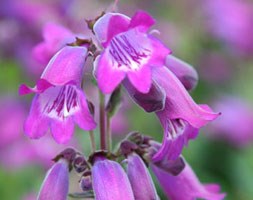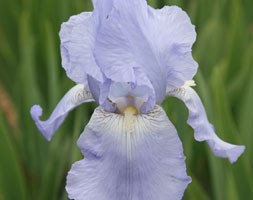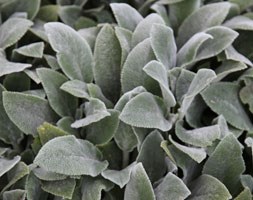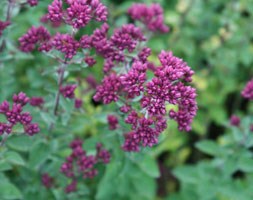New products at Crocus
by Sarah - January 4th, 2014.Filed under: Crocus, New Products.
Crocus just added these new items
Paeonia ‘Buckeye Belle’ (paeony / peony) £9.99
Supplied as a bare root plant. Position: full sun or partial shade Soil: fertile, moisture-retentive yet well-drained Rate of growth: average Flowering period: May to June Hardiness: fully hardy Slight crinkled, dark brownish-red petals surround a prominent boss of creamy yellow stamen in late spring and early summer. This sumptuously coloured, early flowering cultivar looks superb in herbaceous borders alongside plants with rich purple, red or plum coloured flowers. Garden care: Deadhead after flowering. In early spring apply a top-dressing of a balanced slow release fertiliser around the base of the plant and mulch well with well rotted garden compost or manure. If the plant shows signs of collapse or the leaves become spotty, this may be a symptom of peony botrytis. Remove affected leaves immediately. In autumn, cut off all foliage and dispose of it to prevent reinfection the following spring.
Astrantia ‘Buckland’ (masterwort) £7.99
Position: full sun or partial shade Soil: fertile, moist, preferably humus-rich soil Rate of growth: average to fast-growing Flowering period: June to August Hardiness: fully hardy Dusty pink flowers, are surrounded by broad, silvery white bracts, which have attractive green veining and tips. It often comes into bloom earlier than many of the other cultivars, but as the flowers are sterile it will never become a nuisance. The flower heads make delightful additions to fresh cut arrangements and last well when dried. Garden care: Incorporate plenty of organic matter when planting and water well in dry weather especially newly established plants. Lift and divide large clumps in early spring and apply a generous 5-7 cm mulch of well-rotted manure or garden compost around the plant. Divided specimens may take some time to establish since they don’t like having their roots disturbed.
Cirsium rivulare ‘Atropurpureum’ (brook thistle) £6.99
Position: full sun Soil: moist, well-draine d Rate of growth: average to fast-growing Flowering period: July and August Hardin ess: fully hardy Spectacular, deep crimson thistles appear on erect stems in July and August above spiny, dark green leaves. This handsome, towerin g thistle is a valuable addition to a summer garden and looks equally at home in a wildflower meadow, beside water or in groups among other perennials. Although it will tolerate dry conditions and partial shade, it does best in a moist, sun ny border. Garden care: Divide congested plants f rom autumn to spring and cut back to the ground in autumn to prevent self-seedin g.
Achillea ‘Terracotta’ (yarrow) £5.99
Position: ful l sun Soil: moist, well-drained Rate of growth: average Flowering period: June to September Hardiness: fully hardy Achilleas are in vogue again, thanks in part to the many different colours and cultivars that have become available in recent years. Achillea was named by Linnaeus, the modern father of horticulture, in honour of the Greek hero Achilles. They are ge nerally short-lived perennials, with flat, plate-like flowerheads held high on t all stems, and ferny foliage beneath. This one has has masses of rich, terracott a flowers that fade to soft yellow in autumn. It is long flowering and drought-t olerant. Try it in a sunny spot towards the back of an herbaceous border, in a b order of hot colours or among grasses. The flowerheads contrast well withthe s pire-like and spiky flowers of salvia, veronicastrum and eryngium(sea holly). It makes an excellent cut flower, too. Garden care: Achilleas do not like wet soil. Stake using bamboo canes or brushwoodbefor e the flowers appear. Cut down to the ground in late winter, butresist the urg e to do this earlier, as the seed heads look lovely inthe winter light. Pull o ut seedlings as they appear, as they rarelymatch the parent plant. Lift and di vide large clumps in late autumn orearly spring.
Sanguisorba officinalis ‘Red Thunder’ (burnet) £5.99
Position: full sun or partial shade Soil: poor-to-average, moist, well-drained soil Rate of growth: average Flowering period: June to September Flower colour: red Hardiness: fully hardy One of Piet Oudolph’s favourites. In spring, the deciduous, feathery, green foliage emerges and forms attractive groundcover, but it is the summer when the unusual red flowers top the slender, upright stems that it really becomes a head-turner. Perefect for prairie style planting schemes, as it looks right at home in a swaying sea of grasses. Garden care: Divide plants in spring or autumn
Penstemon ‘Sour Grapes’ (beard tongue) £5.99
Position: full sun or partial shade Soil: fertile, well-drained soil Rate of growth: average Flowering period: July to October Hardiness: frost hardy (will need winter protection in cold areas) Elegant spikes of small, tubular, foxglove-like flowers appear from July to October among lance-shaped, bright green leaves. This easy-to-grow perennial will quickly form large, leafy clumps and is perfect for adding a splash of colour to the middle of a sunny, well-drained border. If you deadhead regularly, the flowers will persist until the first frosts. The magenta-blue flowers of this penstemon have a metallic sheen, reminiscent of black grapes, which contrasts particularly well with deep purples and blues. Garden care: Remove the faded blooms regularly to prolong flowering. Apply a dry mulch around the base of the plant to protect the roots from frost damage and cut back in spring when new shoots appear low down on the stem. Lift and divide congested clumps in spring.
Iris ‘Jane Phillips’ (iris’ (tall bearded)) £4.99
Position: full sun or partial shade Soil: well-drained, moderately fertile, neutral to acidic soil Rate of growth: average Flowering period: May and June Other features: all parts of the plant may cause severe discomfort if ingested Hardiness: fully hardy One of the most famous irises ever introduced and still a benchmark to which others are compared. Deservedly popular, this has delicate flax-blue, slightly fragrant flowers with spectacular, ruffled petals in May and June and fans of sword-shaped, grey-green leaves. This tall bearded iris is gorgeous planted en masse in a sunny, well-drained border or as part of a cottage-garden scheme. Garden care: Bearded irises prefer full sun and neutral to acidic soil, but they are tolerant of alkaline soils as long as the pH is not too high . Plant shallowly with the upper part of the rhizome sitting on the surface of the soil, incorporating a low nitrogen fertiliser in the plan ting hole. After planting remove the upper-most third of the leaves to protect against wind-rock. In exposed areas stake with bamboo canes in early spring. Divide and replant about every three years.
Stachys byzantina ‘Silver Carpet’ (lamb’s ears) £4.99
Position: full sun Soil: well-drained, moderately fertile soil Rate of Growth: average Other features: silvery white leaves Hardiness: fully hardy Rosettes of silver, greyish white leaves provide an attractive, weed suppressing carpet for much of the year. This variety of ‘Lamb’s Ears’ rarely flowers and is an excellent, drought-tolerant groundcover or edging plant for a well-drained site in full sun. The foliage is a more intense shade of silver than flowering varieties of the plant. Garden care: Pick off and destroy any foliage that becomes infected by powdery mildew and treat the remaining leaves with fungicide. Lift and divide large clumps in early spring.
Origanum ‘Rosenkuppel’ (oregano) £4.99
Position: full sun Soil: tolerates most freely draining soils Flowering period: June to August Hardiness: fully hardy Slender stems are clothed in aromatic, purple-flushed foliage and terminate in clusters of tubular purple flowers with reddish-purple bracts in summer. A compact perennial, it looks wonderful softening the edges of a path. Sadly though this oregano is not an edible form. Garden care: Cut back old flowered stems in spring.







